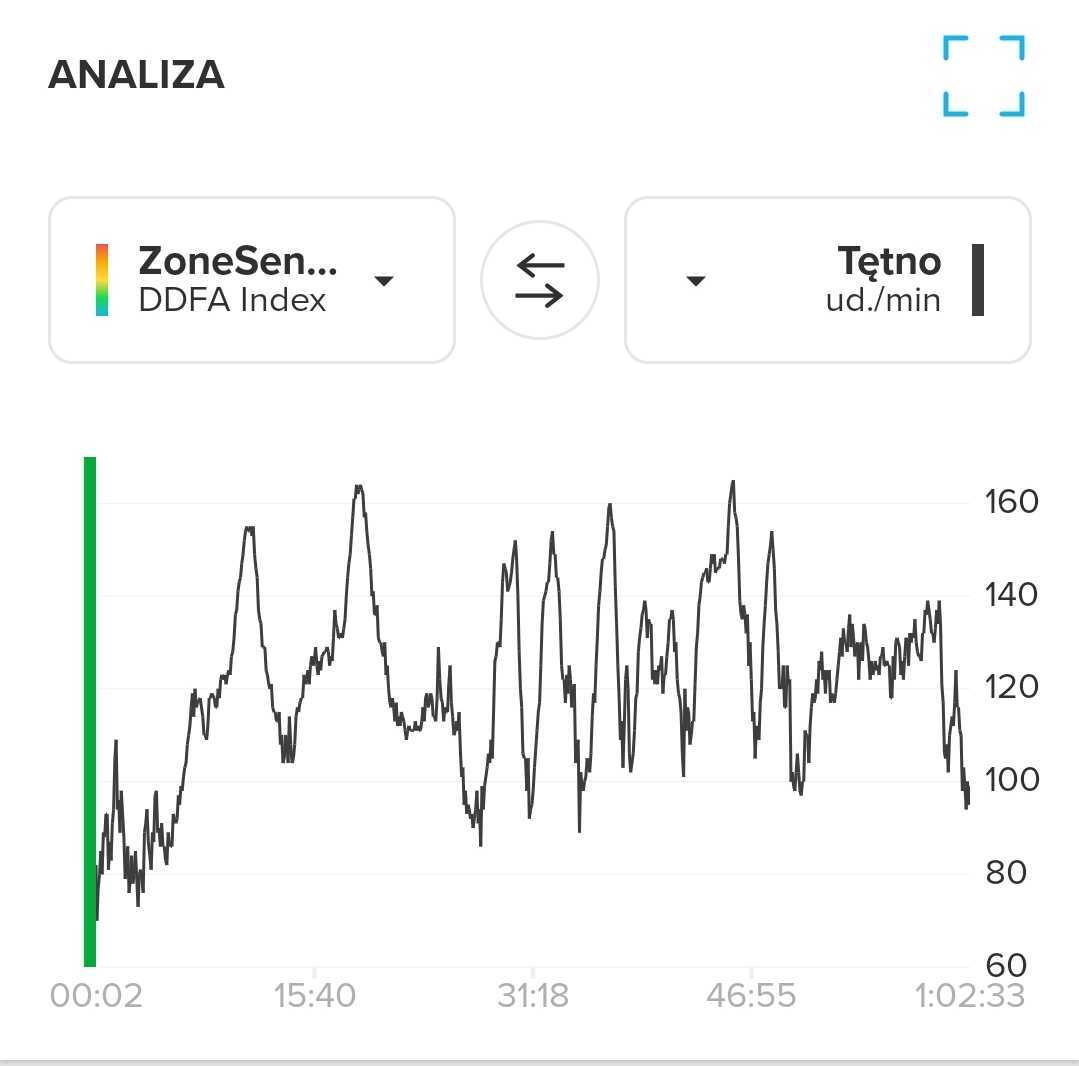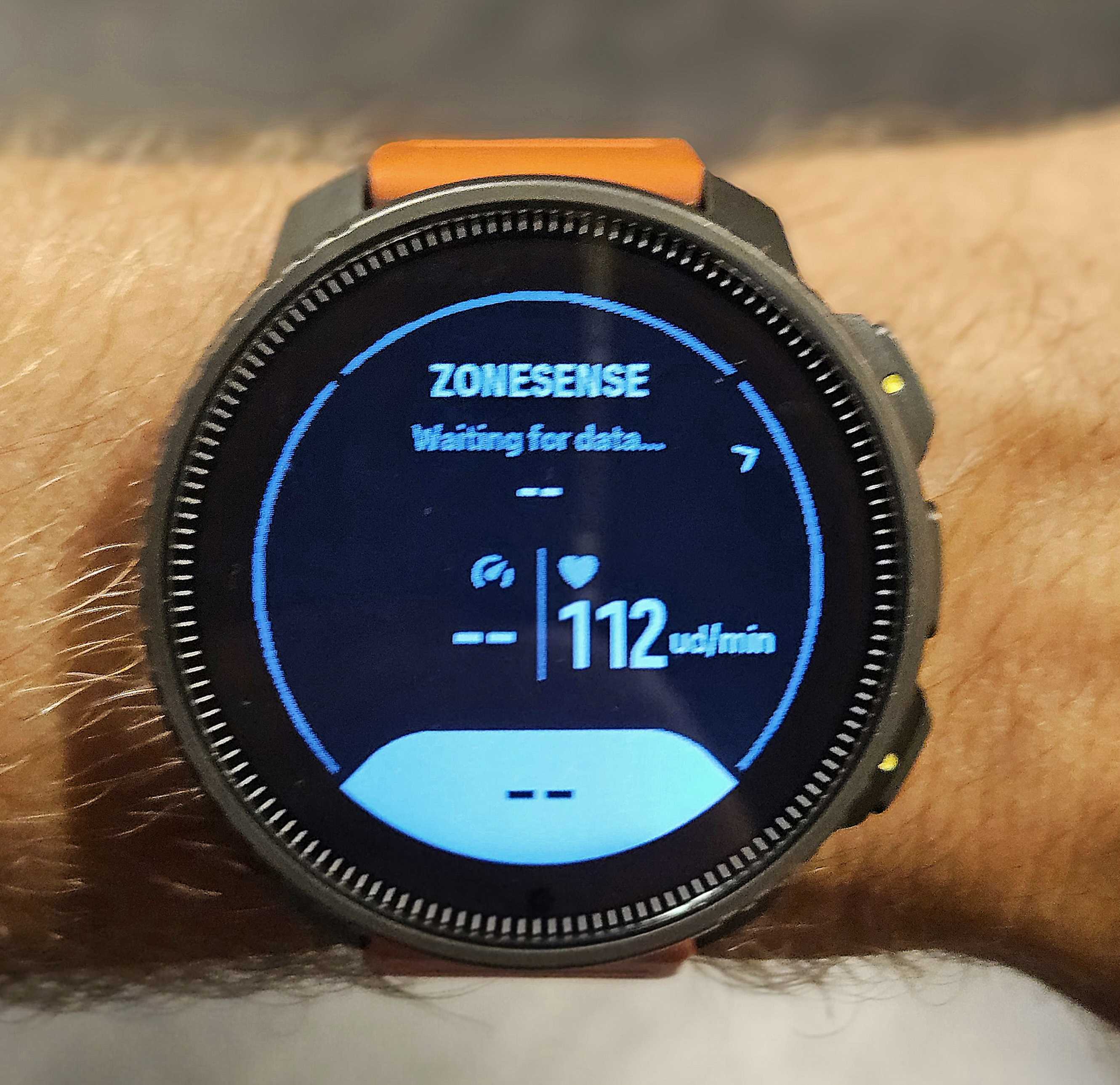Suunto ZoneSense
-
@claudiotereso Could be a Strava issue. Good to open a separate post.
-
@VoiGAS Yes, based on my MaxHR which is correct within they are correct. I cannot sustain 175 by more than 5 seconds, anything over is literally a 1 second reading.
I am in my mid 50s and have tracked its decline from 183mm over the last few years.
It wasn’t really a hard run. Its less than 5 miles with about 20% of my usual elevation profile. Typical runs are 3x longer at similar HR.
(Average hr was 78% of max)
-
@cumbrian-runner said in Suunto ZoneSense:
@Mff73 I am extremely dubious about Zonesense.
The data seems to be mostly garbage sadly.
I have done 6 or 7 runs with it now and it seems to lack credibility.
The anaerobic threshold calculation is clearly nonsense!
Polar H10 used
I agree, your zones are way off. Zonesense appears much closer. Zone 5 is maximal and very difficult to maintain. Z4/5 interface is anaerobic threshold. About as hard as you can go for 20 min. You should try a Cooper test.
-
@duffman19 Even if my MaxHR was 180mm, then the anaerobic threshold is still FAR too high.
I have not hit 180mm in over 3 years at max efforts.
Pay attention to how the ZoneSense declined on the biggest effort. The higher my HR goes, Zonesense goes in the opposite direction.
I ran with Coros too and both use very similar zones.
If conventional Suunto and Coros zones show correct and as as expected realistic HR and Zonesense for Anaerobic is WAY out of line for what is possible, then to me the evidence I have suggests Zonesense is ID’ing anaerobic efforts wrongly, not the reverse.
-
@cumbrian-runner You did hit 178 during that workout. Was that an all-out effort for you? If so, then your max HR is probably close to 180+.
@cumbrian-runner said in Suunto ZoneSense:
I cannot sustain 175 by more than 5 seconds
Correct. You should not be able to sustain your max HR for any length of time. It is the absolute highest possible reading you could get from an absolute all-out effort. As @Brad_Olwin suggested, you may want to try a Cooper test.
@cumbrian-runner said in Suunto ZoneSense:
Pay attention to how the ZoneSense declined on the biggest effort. The higher my HR goes, Zonesense goes in the opposite direction.
I have noticed the exact same behavior. However, it has been pointed out here and in the ZS documentation that ZS does not work well for shorter, high intensity intervals. It needs time to settle or calibrate for each effort, even after the initial 10-15 minute warm-up period. I’ve been doing a lot of half mile hill repeats lately and my graphs match yours. When I start the uphill, ZS takes a big dip down into aerobic even though my HR is rising drastically. By the time I reach the top of the hill/interval 4 minutes later, ZS has “caught up” and shows a peak of VO2 max sometimes.
I think the takeaway is that ZS is best for long endurance activities where our zones may drift due to variables that cannot be measured by hear rate alone.
-
well long endurance efforts is literally what I do, and I have yet to have sensible results out of those either as a Day 1 Zonesense adopter.
My MaxHR has not gone to 180mm since 2021 - either you trust me on this or you do not. But even if it was 180 bpm then 171bpm is way to high which is the point everyone is missing.
At max absolute top speed / top effort which is typically on a parkrun I might hit 175bpm for a few seconds then immediately fade.
I will adjust my MaxHR to 177 but that wont influence Zonesense, in this case 171 ( 98%) would display as 171 (97%) instead. 171 is not credible at 175, 177 or 180bpm
-
@cumbrian-runner said in Suunto ZoneSense:
either you trust me on this or you do not
Of course you know yourself best. Max HR is somewhat irrelevant anyway. Lactate (anaerobic) threshold is the more important figure, which should be set as the upper limit of your Zone 4. Judging from the few charts you’ve posted, it looks like your threshold is probably higher than you have it set. Maybe not 171 high, but something close to that would spread out your zones more evenly.
I have yet to adjust my zones based on ZS recommendations because I’m still trying to figure out which of my activities it is effective for. And, honestly, I’ll probably not use it much at all since I don’t like wearing an HR belt
 .
. -
@cumbrian-runner of course we trust you about your experience, but you should also trust the people here.
Max Heartrate is something a lot of people will seldom experience because its a extreme situation. You will only reach it with in very, very hard sessions no one normally is doing.
Thats why defining zones based on max HR is not advised, better is to do some of the tests to calculate your threshold heartrate -
I can confirm that ZoneSens is not working with Polar Verity Sense but… it is not working with Polar H9 chest strap!!![text alternatywny]


PS. Probably it is not RR problem - it works with H10 but not with h9:

-
@aslysz I have an H9 and it works just fine, so might be a different issue there.
-
@The_77 Thanks.
This is strange, because as you can see HR was still working, and ZoneSense was displaying the message “Waiting for data…”
-
@aslysz are you sure the HR data were coming from the H9 and not your watch?
The sensor pairing is a bit convoluted, your Suunto only knows a single sensor device of each type. If you had (like me) paired a POlar Verity Sense to your watch and switched to (I.e. paired to the watch) another external HR sensor (H10) to try out the new ZoneSense, your watch will show it is waiting to connect to an external sensor but it is not telling you which one.
The only way to be sure is to unpair and pair the sensor that you want before the run, but really be sure it is the only active sensor around.
Suunto really should allow naming of sensors to know WHICH heart rate metering device is the current one (it may not be the one you assume). I noticed a few times that although previously the wait screen indicated it had connection to all sensors in the sports profile, in my run suddenly the watch‘s HR metering was active and measuring …mostly my cadence. -

This is an image from today‘s race, a half marathon. I ran mostly by feel and know that aside from the first kilometer, where I lost almost precious minute because right after the start the race track narrowed so much that overtaking was impossible, the rest of the race was pretty good actually. I did not overpace and did not lose too much time trotting around aimlessly either, so overall pretty satisfied, PB and winning my age group for the first time

What I find interesting is the ZoneSense diagram. I now have a much clearer picture what a near maximal sustained effort should look like (I know what it feels like). Having this information on your watch in real time is more useful than it may appear at first blush. The pace I was aiming at was faster than my usual pace and I had just recovered from a nasty bronchitis, so I was not sure what a good value in terms of pace or power should be. The ZoneSense data reflect my „I feel good today“ feeling on the basis of which I decided to consider myself recovered.
The annoyingly slow first part, the mostly on target (based on the form of TODAY) effort throughout the race, only a few moments excursion into the red - I have to say, that is a very good match of how I would judge the race today and the results reflect that. Not knowing what I should aim for, I only looked at the ZoneSense data after the race but next time, I already know that ZS has gained its place on my watch on race day.Good job, Suunto.
-
@aslysz I’ve tried it four times with the s9pp and a polar h9 and it works. Only in customized sport modes I’ve recognised that you don’t see time spend in zones.
-
@marcrie I only use customized support modes and ZoneSense works with them. But if multiple S+ are selected, then the ZoneSense app may not work properly.
-
question which is not directly linked to Suunto ZoneSense:
does anyone know if using the heart rate belt and the Suunto+ Suunto ZoneSense application reduce the autonomy of the Suunto vertical significantly ?
(I want to use it for a long trail) -
@Antoine I don’t think it has any significant effect. Regarding belt vs. wrist based HR, I think the latter may need more power than the former. Whether the computation required by ZoneSense is significant, I don’t know, but I doubt it needs significant excess power.
-
@Antoine said in Suunto ZoneSense:
question which is not directly linked to Suunto ZoneSense:
does anyone know if using the heart rate belt and the Suunto+ Suunto ZoneSense application reduce the autonomy of the Suunto vertical significantly ?
(I want to use it for a long trail)No, in fact the belt should improve battery life but will not make much of a difference. The Solar version should go 90h so your long trail is indeed long:)
-
Alright, I get the frustrations with no ZoneSense data appearing on app. A recent personal example: I finally got to do a decent workout. I did it three parts - warmup, threshold workout, cooldown - because of shoe change. After syncing with the phone, to my dismay, only warmup appeared to have ZS data. But then I also noticed that the two other activities didn’t have “…” option on activity listing, i.e. I wasn’t able to edit them. I don’t know the ins and outs of Suunto’s cloud but I reckon it might be the case of those activities being queued up for analyzation. Lo and behold, some hours later the ZS did appear.
Just one experience, I know that obviously this isn’t the case for everyone

-
I couldn’t find the topic that’s why I’m asking
Do you notice a relatively long response time to changes in zonesens.
I will give an example of changes in pace and heart rate changes, the watch immediately reacts but ZONESENS takes more time to react to a change in the transition from aerobic to anaerobic or in the transition from anaerobic to vo2max